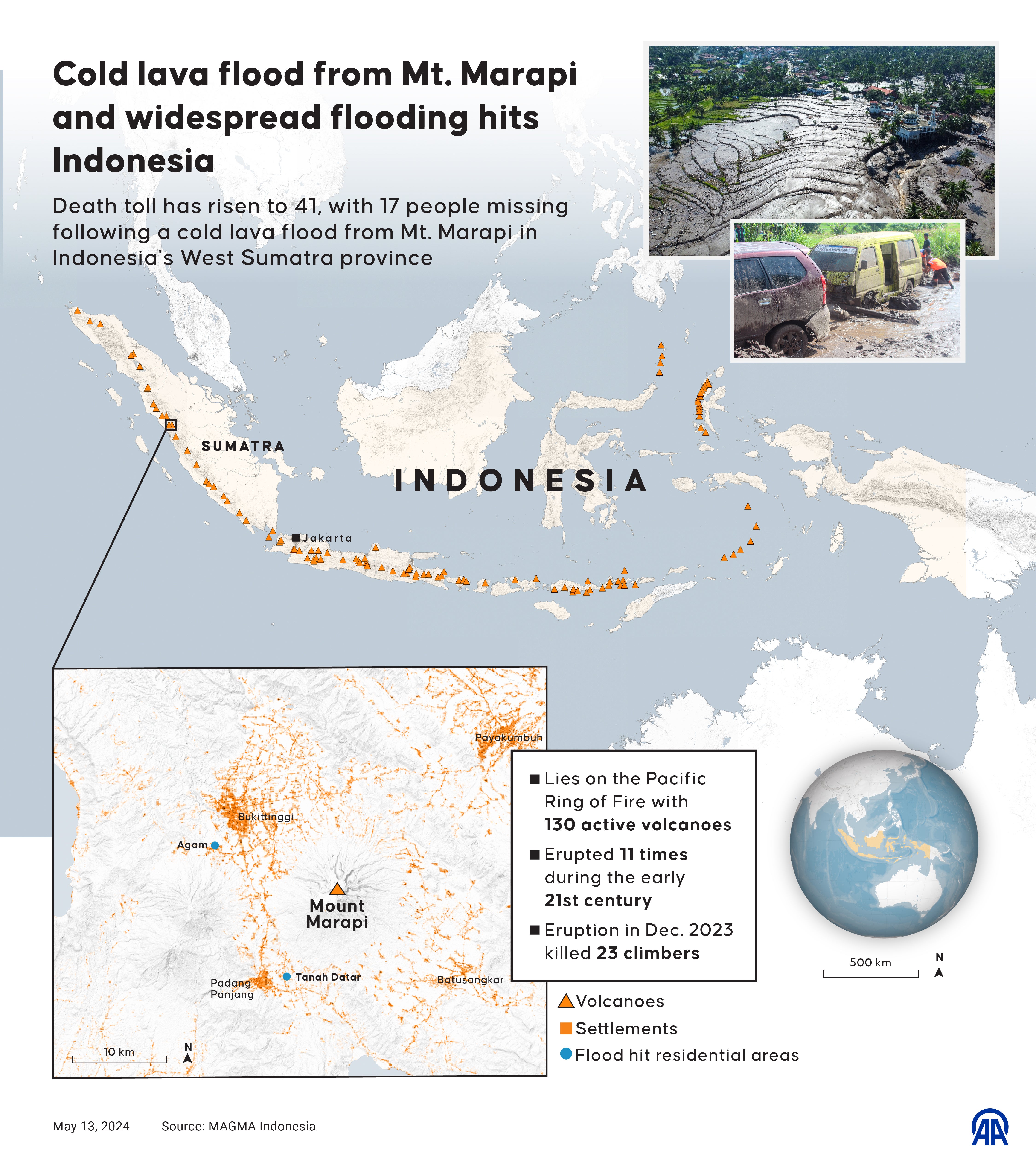What is cold lava? The volcano phenomenon that has devastated Indonesia’s Sumatra
Cold lava, or ‘lahar’ in Javanese, is a mixture of water and rock fragments that flows down a volcano and typically enters a river valley
Your support helps us to tell the story
From reproductive rights to climate change to Big Tech, The Independent is on the ground when the story is developing. Whether it's investigating the financials of Elon Musk's pro-Trump PAC or producing our latest documentary, 'The A Word', which shines a light on the American women fighting for reproductive rights, we know how important it is to parse out the facts from the messaging.
At such a critical moment in US history, we need reporters on the ground. Your donation allows us to keep sending journalists to speak to both sides of the story.
The Independent is trusted by Americans across the entire political spectrum. And unlike many other quality news outlets, we choose not to lock Americans out of our reporting and analysis with paywalls. We believe quality journalism should be available to everyone, paid for by those who can afford it.
Your support makes all the difference.Flash floods, landslides and a stream of cold lava from an active volcano left at least 43 people dead and 19 missing on the Indonesian island of Sumatra over the weekend.
Images and videos shared by Indonesia's disaster response agency showed thick mud and ash covering roads and fields near the foot of Mount Marapi, one of the most active volcanoes in the country.
The ash was from cold lava, known as "lahar" in Javanese, a hot or cold mixture of water and rock fragments that flows down the slopes of a volcano and typically enters a river valley.
Cold lava can flow rapidly, at a speed of hundreds of kilometres per hour, and spread as far away as 60 km from the volcano.
Cold lava flow generally occurs on or near a stratovolcano and can crush or bury almost anything in their path. It is considered more destructive and deadlier compared to regular lava flows, according to the United States Geological Survey.
“By destroying bridges and roads, lahars can also trap people in areas vulnerable to other hazardous volcanic activity, especially if the lahars leave fresh deposits that are too deep, too soft, or too hot to cross,” said the US Geological Survey.

Cold lava can form with or without an explosion. Heavy rain or snowfall can erode and transport loose volcanic sediment and form a slurry where vegetation poses no hindrance to the flow.
“A small eruption of ash or lava can melt enough of that snowcap to produce devastating lahars,” Brittany Brand, director for the Boise State Hazard and Climate Resilience Institute at Boise State University, told Newsweek in an interview.

Rains frequently cause landslides and flash floods in Indonesia, an archipelago nation of over 17,000 islands where millions of people live in mountainous areas or near floodplains.
Indonesia sits on the Pacific Ring of Fire with 127 active volcanoes, more than any other country in the world.
Mount Marapi alone has erupted 11 times in the 21st century. An eruption in December left 23 climbers dead and spewed ash as high as 3,000 metres into the air, covering entire towns and villages in the surrounding areas. It erupted again in January, prompting Indonesian authorities to warn people against going within a 4.5km radius of the crater where the eruption took place.
Further back in 1979, an eruption of the volcano killed 60 people.

Join our commenting forum
Join thought-provoking conversations, follow other Independent readers and see their replies
Comments